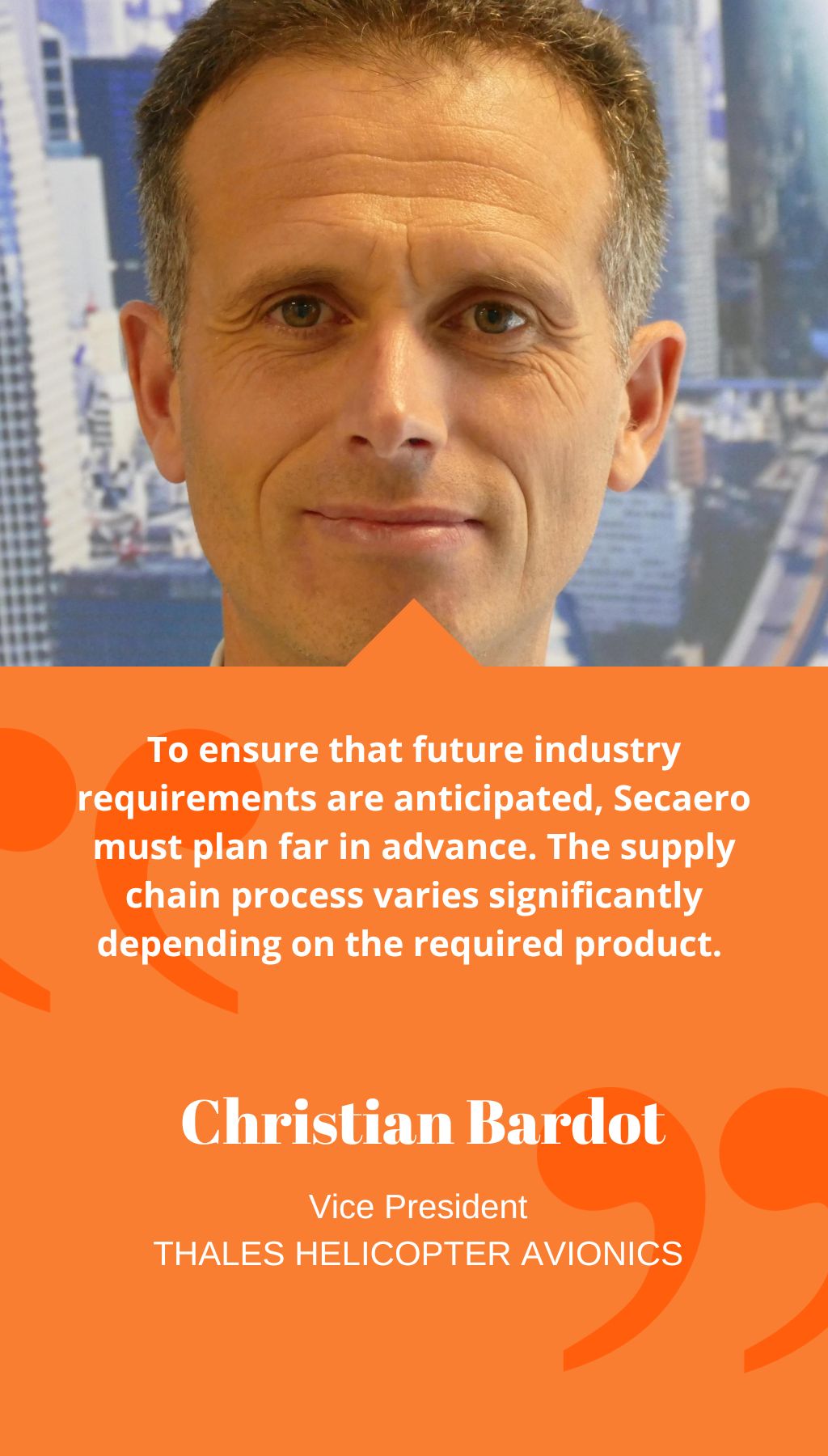
- France | 16 August 2018

Could you please provide an introduction to Thales’ Valence sites and explain how they fit into the global company structure, given that Thales has more than 2,300 employees in the Auvergne-Rhône-Alpes region?
Thales’ Valence office, in conjunction with its offices in the UK, US, and Australia, serves the global civilian and military helicopter market, with a focus on innovation in avionics. The Valence office is regarded as an innovation hub for avionics, alongside hubs in Bordeaux and Montreal, as well as an emerging hub in Asia.
In response to the demands of the helicopter industry pilots to bring integrated solutions to the market, how has Thales Helicopter Avionics responded?
Thales Helicopter Avionics has developed the TopOwl® and Scorpion Helmet Mounted Sight Display for rotor wing and fixed wing aircraft in collaboration with pilots. These systems, part of Thales’ new generation connected cockpit, utilize advanced technologies that simplify and reduce task workload for the pilot, enabling them to concentrate on the mission at hand. Thales Helicopter Avionics also works closely with pilots to develop aircraft navigation spare parts and offers global logistic and operational support. Additionally, Thales Helicopter Avionics’ subsidiary, Secamic, offers global aircraft maintenance services, primarily in the military and helicopter sectors, providing purchase and resale, MRO, and technical support services. Furthermore, Secaero, another subsidiary of Thales Helicopter Avionics, is a market leader in night vision technology that was developed internally.
How does Secaero ensure that its supply chain is a smooth and sustainable process?
Secaero typically collaborates closely with its suppliers throughout the OEM process, capitalizing on their industry experience. To ensure that future industry requirements are anticipated, Secaero must plan far in advance. The supply chain process varies significantly depending on the required product. However, Secaero has a competent team that has control over the entire supply process.
What are the future growth prospects for Secaero, and what potential challenges does it face?
In the short to medium term, Secaero sees significant growth prospects in the South American and African markets for maintenance and modernization services. They are also aiming to expand their capabilities in the fixed wings market. Secaero has the potential to grow with existing clients and customers by offering ongoing maintenance, technical assistance, and additional complementary products. To stay ahead of the competition, Secaero needs to focus on being proactive with its product offerings and maintenance instead of being reactive. They aim to create a more integrated product offering and solution for clients. Another growth prospect is to expand their partnerships with complementary business partners. Product development, structure, and modernization of offerings and capabilities are the path forward. Secaero’s goal is to be a leader in MRO activity by 2020, and the growth of the group will come through new acquisitions.
Could you please explain Secaero’s structure and company expertise in the optronic and maintenance space?
Secaero, previously known as Aerotech Group, was acquired by the leading French group Secamic at the end of 2017. Secamic has been providing spare parts in over 22 countries for more than 30 years, and it is one of the leading French companies exporting military aircraft and helicopter flight management systems in Valence. In the optronic and maintenance space, Secaero utilizes its expertise to develop and enhance MEMS sensors and GNSS systems, as well as to develop advanced algorithms to improve systems for both civil and military customers.














